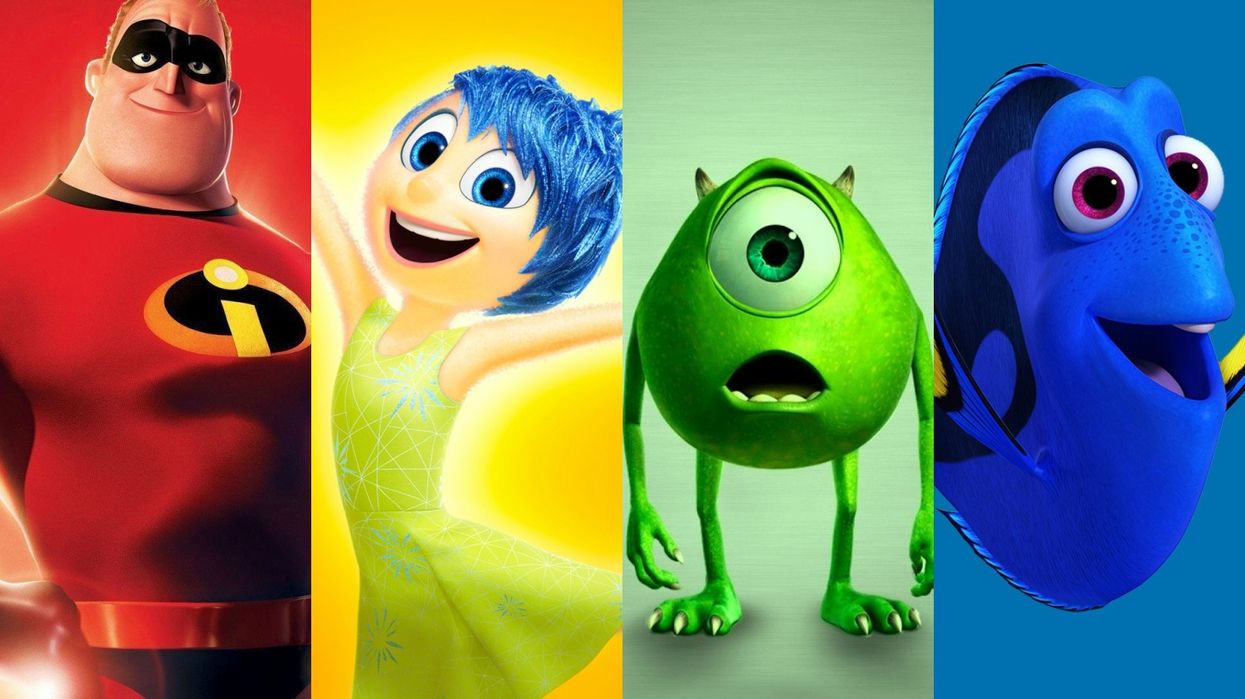Watch: 4 Things Pixar Always Does to Create Memorable Characters
There's a reason why Pixar characters stay with you long after the end credits roll.

We all have a favorite Pixar character. You're probably thinking of them right now, hearing their best lines and replaying the scene in your head that made you an instant fan. And how could you not be? Pixar's characters, from Woody to Sadness Mike Wazowski have a unique way of sticking with you, whether it's due to their hilarious banter or heartbreaking humanity. But what is it that Pixar does to make them so memorable? Well, StudioBinder offers up an explanation in this interesting video.
We could all make reasonable arguments as to how Pixar manages to develop such memorable, multi-dimensional characters, but here are the ones StudioBinder comes up, some of which are based on what Pixar alums have said about the process.
They all have spines
According to Pixar screenwriter Andrew Stanto, all well-drawn characters "have a spine," and that their "inner motor," whether it's Marlin's desire to prevent harm or Wall-E's desire to find beauty, is the goal that subconsciously drives them throughout their entire journey.
They all have clear external wants
Woody wants to be Andy's favorite toy. Bob Parr wants to be Mr. Incredible again. Joy wants to make Riley happy. These are all examples of a character's external "want", and all major Pixar characters have them. In fact, these wants are often in direct opposition to their true internal goal. Example: Marlin's internal goal is to prevent harm, but his external want, to keep Nemo safe and alive, is actually the very thing harming him and keeping him from truly living.
They all have unconscious, innate needs
Pixar characters are incredibly flawed individuals that require growth in order to address said flaws. The thing that is required for this growth to occur is the character's "need." Let's use Marlin as an example again. Marlin's goal is to prevent harm, but his external want, to keep Nemo safe, is actually the thing harming him. He needs to let go and allow Nemo to be in harm's way in order to give him a life worth living.
They all have character arcs
This is the structure that brings it all together: the spine, the wants, and the needs. What character arcs do is put characters through trials and tests, most of which they fail, in order to teach them the lesson they've needed to solve their problem. Whether the character learns the lesson and grows and solves their problem is another story. StoryBinder provides a nice rubric in case you want to study this a little further.
- Super Happy Ending: Bob Parr learns teamwork (need) and gets to be a superhero again (want). (The Incredibles)
- Bittersweet Ending (Hero): Carl doesn't get to live in his house forever (want), but he learns he can create new memories with new friends (need). (Up)
- Bittersweet Ending (Villain): Buddy gets to be a superhero (want) but doesn't learn to value human (or super) life (need). (The Incredibles)
- Super Sad Ending: Charles Muntz doesn't let go of his bitterness toward the National Explorer's Society (need), and his murderous pride keeps him from capturing Kevin (want). (Up)
Developing memorable characters is one of the most difficult things you'll ever have to do as a screenwriter, but hopefully knowing a little bit about how Pixar does it will help you get started!
Source: StudioBinder














